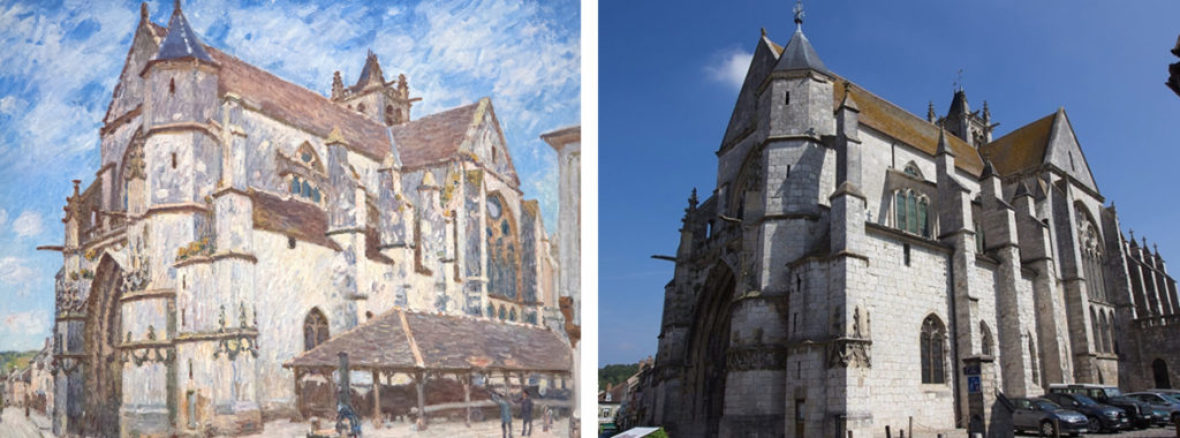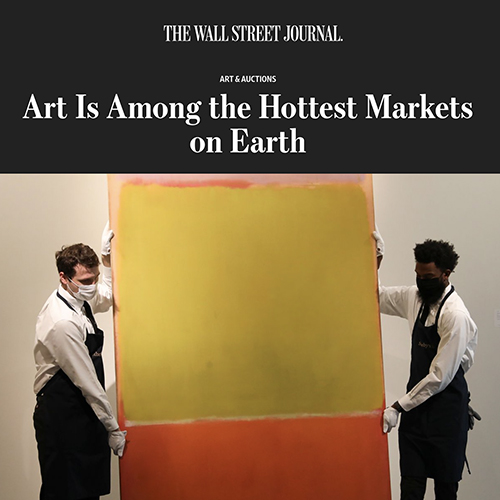モネのルーアン大聖堂の 連作は、美術史上最も名高い業績のひとつである。1892年2月初旬の初回から3年以上を経て、モネの30点の大聖堂のうち20点がデュラン=リュエル画廊で展示され、1895年5月には来場者の圧倒的な支持を得て、大成功を収めたのである。画家では、ピサロが「彼らの並外れた手際の良さに心を奪われた」と書いている。昨日デュラン=リュエルの店で会ったセザンヌも全く同意見だ。これは、他の画家にはない無形の効果のニュアンスを追求する、バランスのとれた、しかし衝動的な芸術家の作品だ」(カミーユ・ピサロ、1895年5月(カミーユ・ピサロから息子リュシアンへ、1895年5月26日)
しかし、1892年4月、モネはこの試みにあまり自信を持っていなかった。気分の落ち込みが激しいモネは、大聖堂のキャンバスを抱えてジヴェルニーに戻り、光とそれが形に与える影響をこれまでの常識から逸脱させるのは行き過ぎではないか、と心配になったのだ。しかし、訪問客に作品を披露したところ、驚きの声が上がり、モネは自信を深めていった。アメリカの画家セオドア・ロビンソンは、この傑作を見た人々の唖然とした反応に呼応するように、絶賛した。「巨大な作品だ。建築物がこのように描かれたことはかつてなかったと思う。最も驚くべき印象、壮大さと崩壊の感覚...どこにも線がないのに、素晴らしい建造物と堅固さの感覚がある。このような素材を用いて、このような壮大な使い方をする人というのは、不思議な存在だと思わないか?(ロビンソンからJ・オールデン・ウィアーへ、1892年5月)
アルフレッド・シスレーは、カテドラルの最初の応答者の一人だったのでしょうか?間違いない。モネとシスレーは、最も親しい友人であった。シスレーは私的で寡黙な人物で、経歴をほとんど残さないが、モネが尊敬する芸術家であり、非常に信頼できる人物であった。実際、シスレーとモネの仲間たちの生の証言が、この2つのシリーズの関連性を裏付けている。1893年9月21日、ベルト・モリゾとエドゥアール・マネの弟ウジェーヌの娘ジュリー・マネの日記には、「雨の朝から晴天になり、モレまで車で出かけ、シスレーに会った」と書かれている。彼女の息子で美術史家のドゥニ・ルアールはこの記述を確認し、さらに「ベルテと娘は...マラルメ夫妻とモレに行き、シスレーは一連の教会を描いていた-モネの一連の聖堂に触発されたと、マラルメはそう考えた」と述べている(ドゥニ・ルアール著『パリ』)。(ドニ・ルアール、パリ、1950年)
アルフレッド・シスレーは、1889年11月にモレ・シュル・ロワンに居を構えました。この村は、フォンテーヌブローの森の端にあるイル・ド・フランスとブルゴーニュの間にある、他に類を見ない魅力的な村です。この村の最大の魅力は、ゴシック様式の堂々としたノルテダム教会で、川から見える景色を圧倒しています。シスレーのささやかな庭から、この教会の塔を眺めることができるのである。
シスレーは、ルーアン大聖堂の西側のポーチを描いた30点の作品を、ファサードの光と影の戯れとしてのみ制作したモネとは異なり、光や雰囲気が変化する中で教会の不変性を確認しようとしたのである。シスレーは、印象派の画家のなかでも、アトリエにこもって制作することなく、屋外で制作することに最も力を注いだ画家である。静かで私的なシスレーは、これまでと同じように、モチーフが大気の変化によって変化する様子を表現するために、プリマで、もっぱら野外で聖堂の制作に取り組んでいた。陽光の中で」「霜の下で」「雨の中で」というタイトルをつけ、1894年のシャン・ド・マルサロンにグループ展として出品しているのは、この作品を連続した解釈として捉えていたのだろう。
シスレーは、その穏やかな誠実さと、雰囲気や色調を忠実に表現する能力がしばしば評価されましたが、力強い構成の構図も可能で、珍しいアングルからの描写を得意として、作品に活気を与えていました。この《モレの教会、午後 》は、シスレーがイーゼルに座って制作した作品である。視線はやや上向きに傾いているが、南西のポルティコの角にはっきりと向けられている。その束ねられた柱が、教会のモチーフの堂々とした上方への推進力を強調している。しかし、ここでの真の芸術性は、それが中心となって、二つの緊張した力が互いに引き離され、驚くべきことに、相応の強さをもって機能していることである。この絵の素晴らしさは、左側の狭い通り(Église通り)が作り出す急降下する遠近法と、想像を絶する重量と質量を持つ石造りの建造物がもたらす白黒の対立による劇的効果であり、どちらも平面的な側面で、完璧な三点減勢遠近法を見事に示しているのである。
シスレーがモレの教会を描いた油彩画は十数点知られているが、この《モレの教会、昼下がり 》は、その大きさだけでなく、彼の全作品の中でも最大級である。この作品の大きさは、シスレーが描いた当時も中世の時代も変わらずに存在し、現在も私たちのために存在し、そしてこれからも永遠に続く、難攻不落で強固な建造物の建築家と建設者を十分に尊重したオマージュを制作しようという決意を示している。
お 問い合わせアートの詳細
アルフレッド・シスレー (1839-1899)
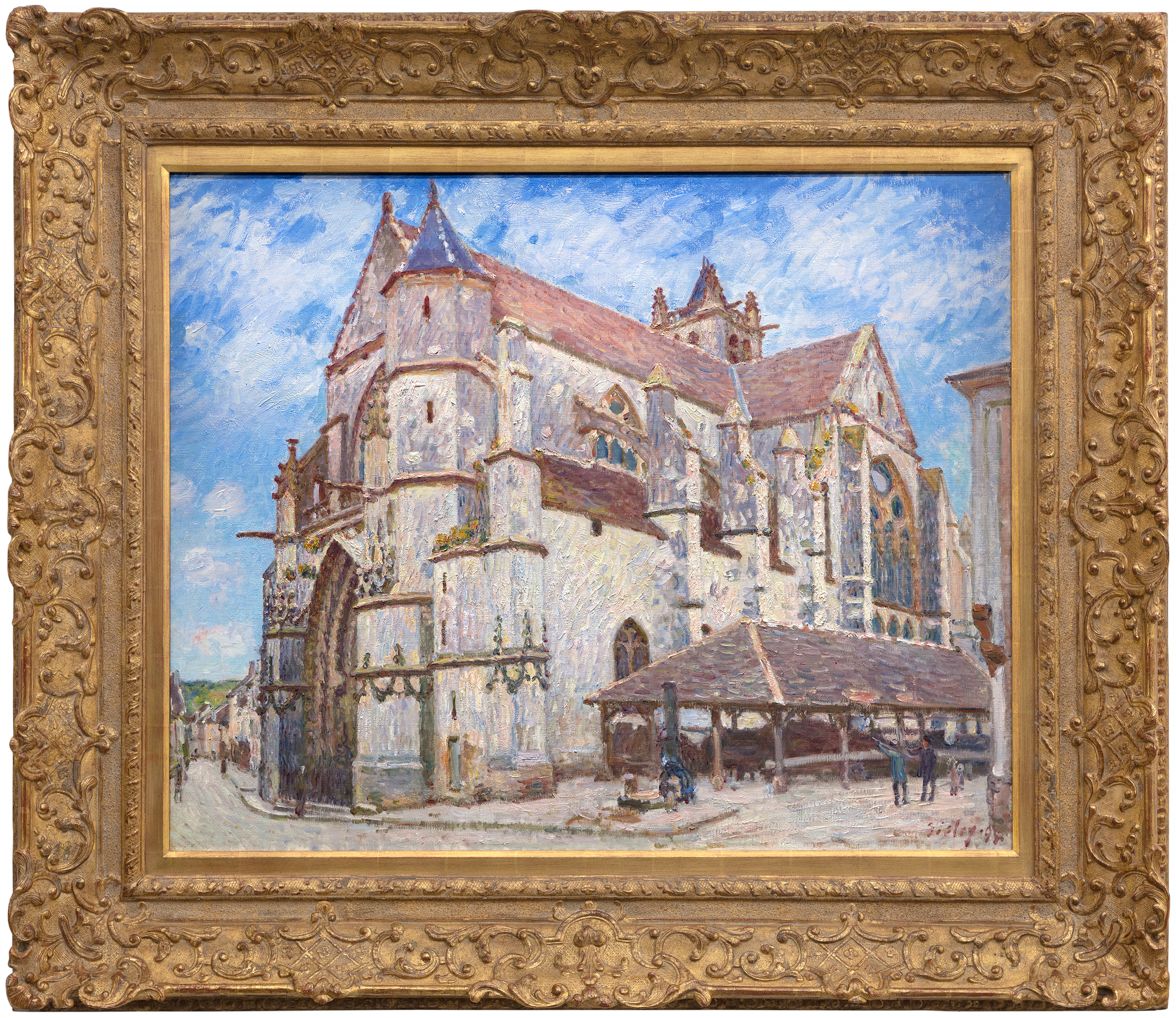
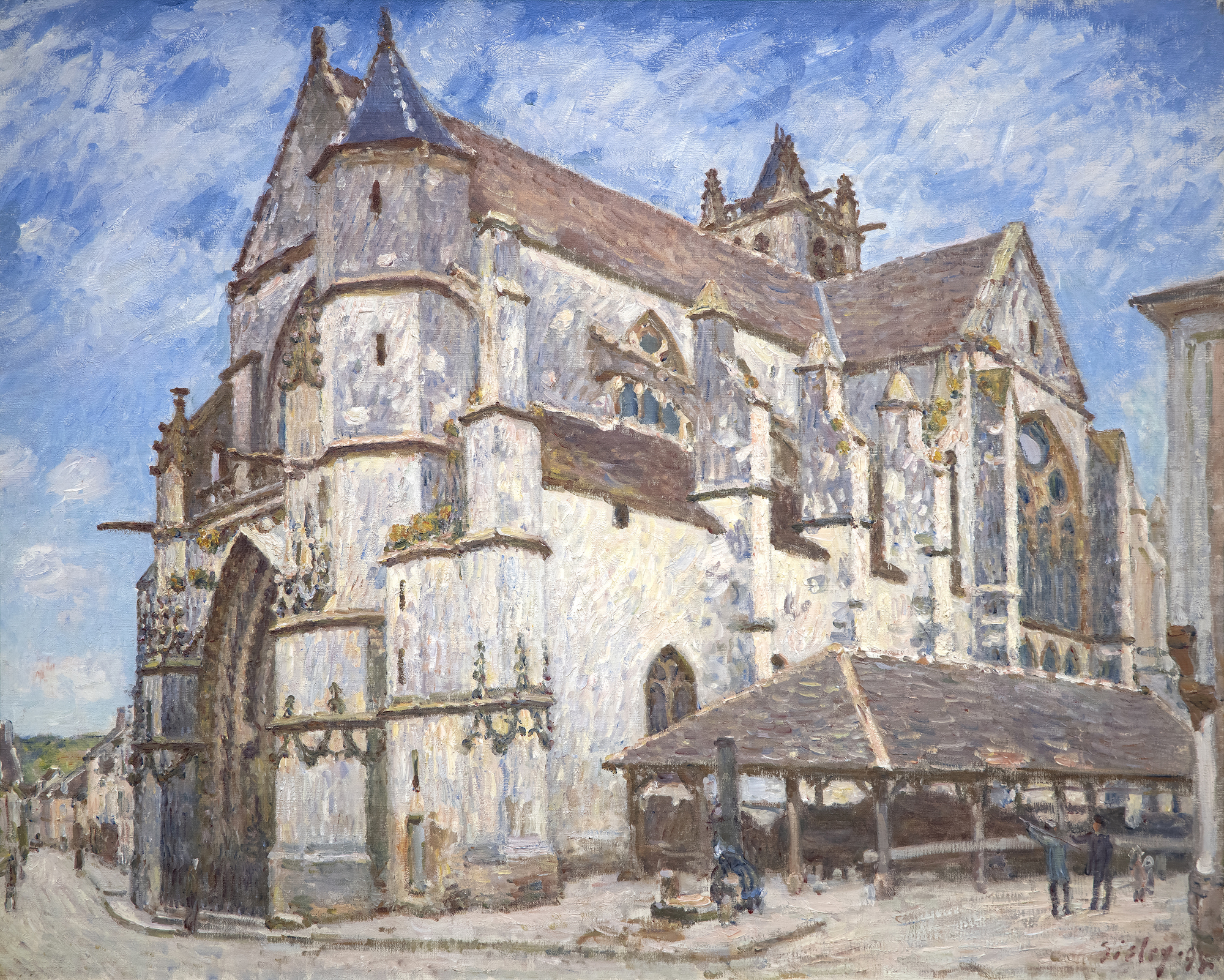
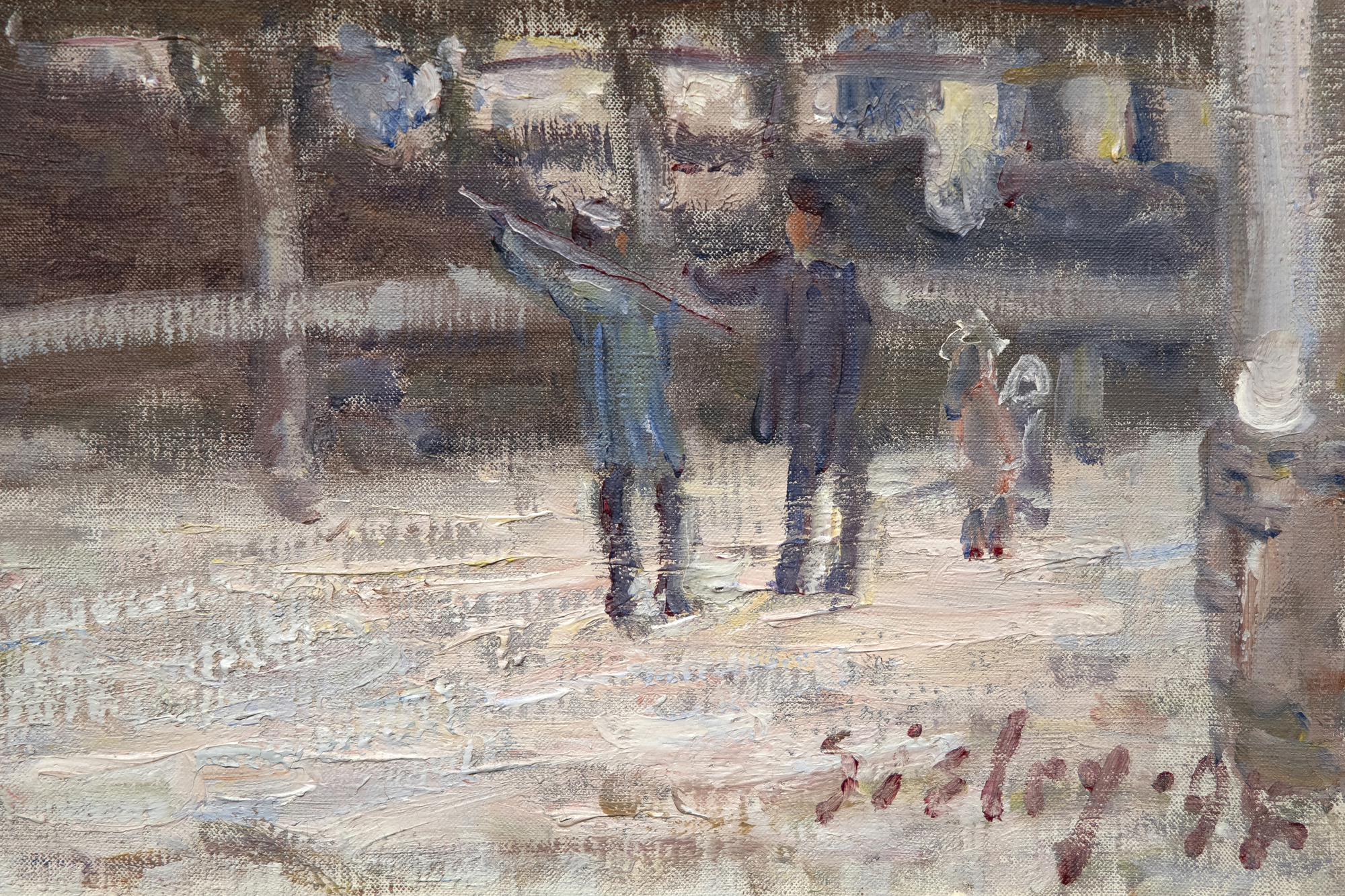
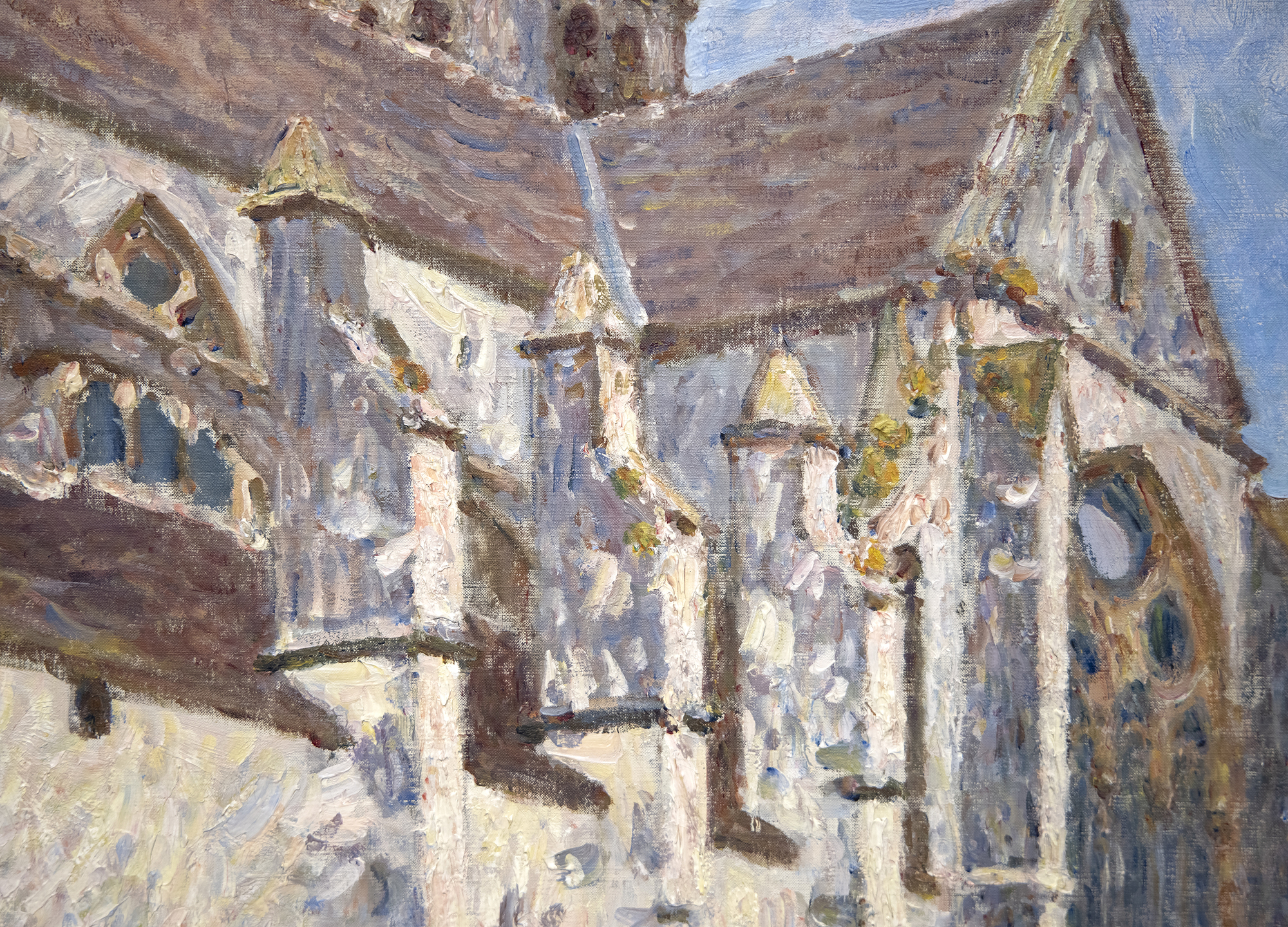
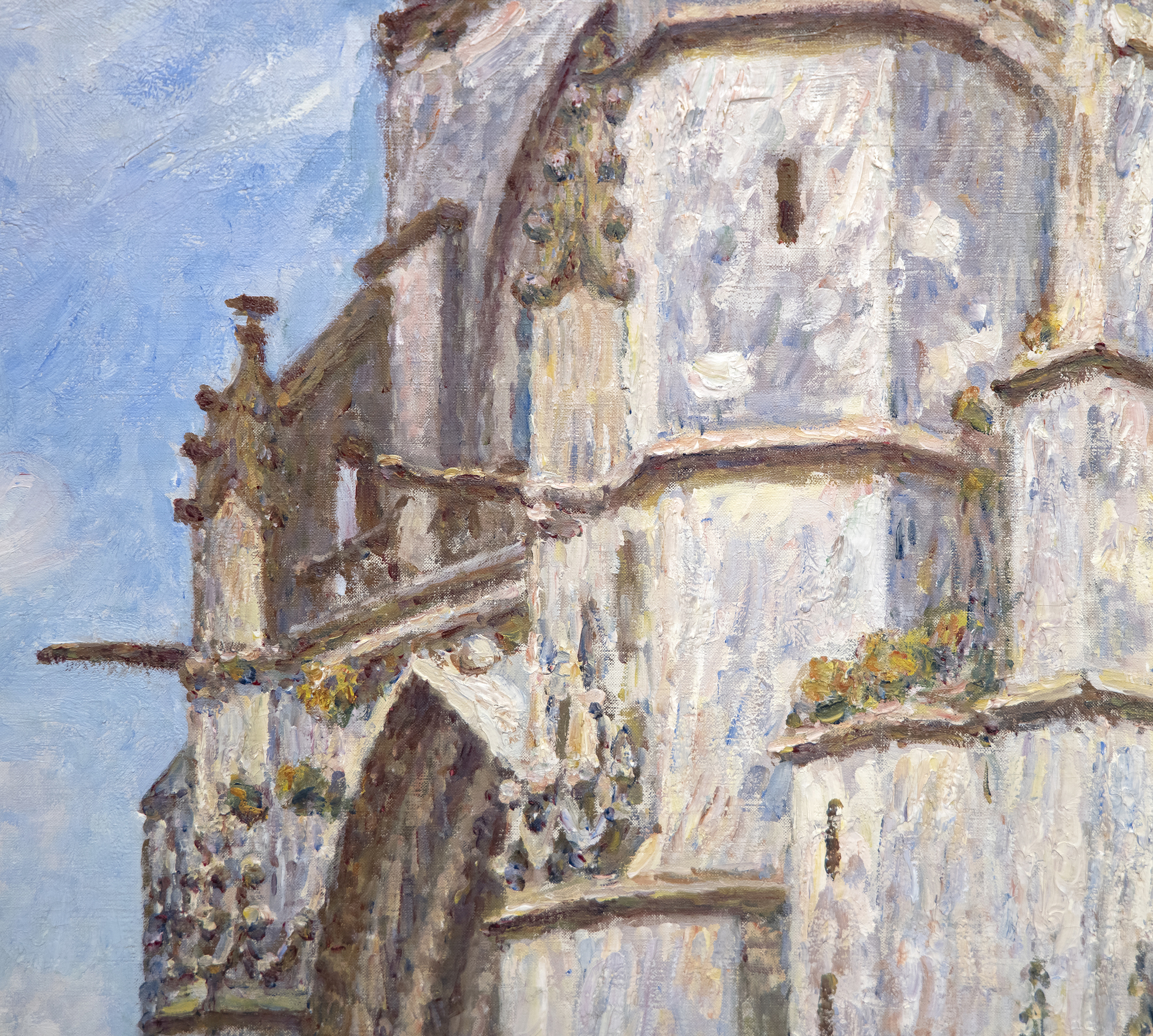
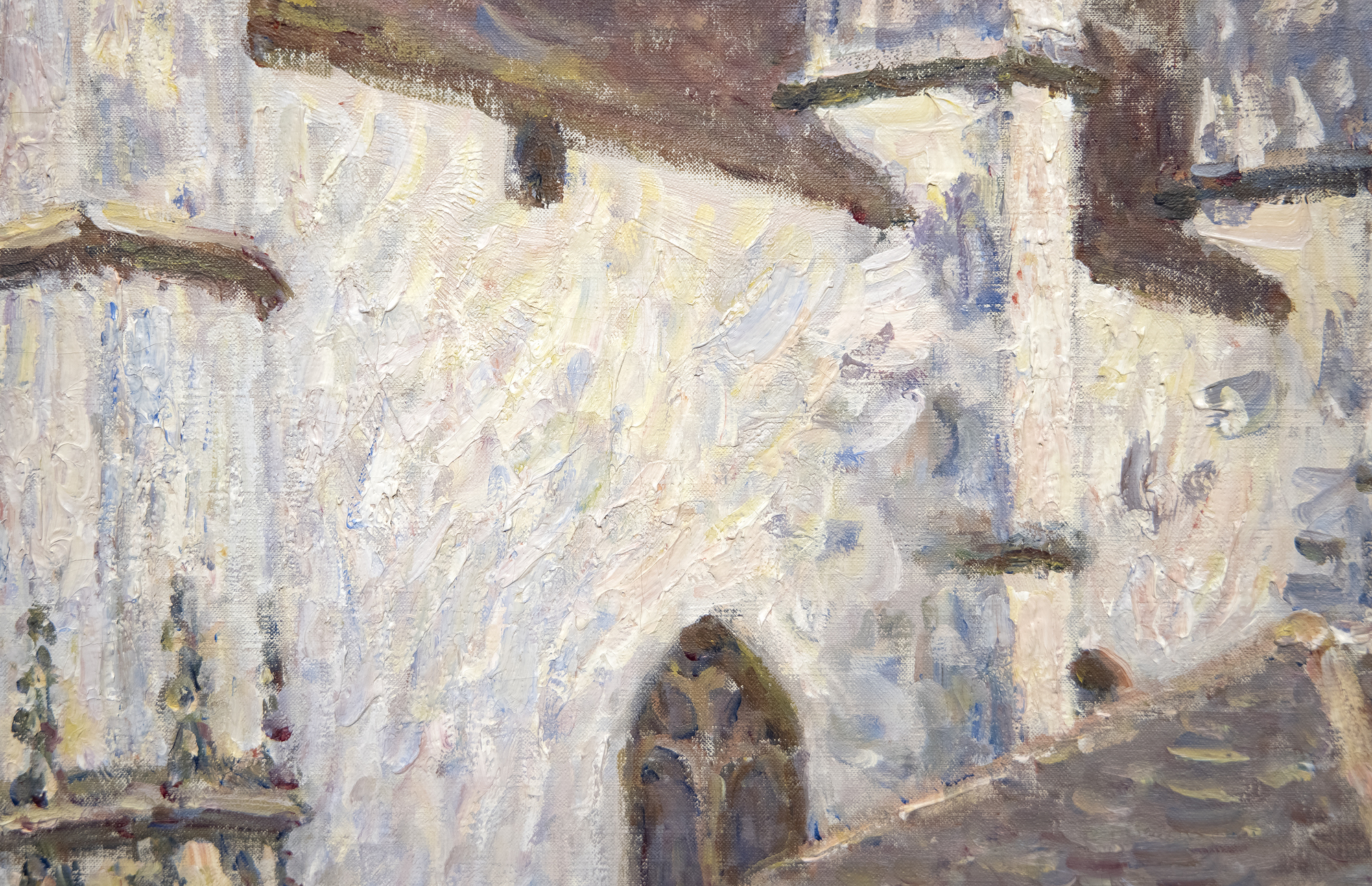
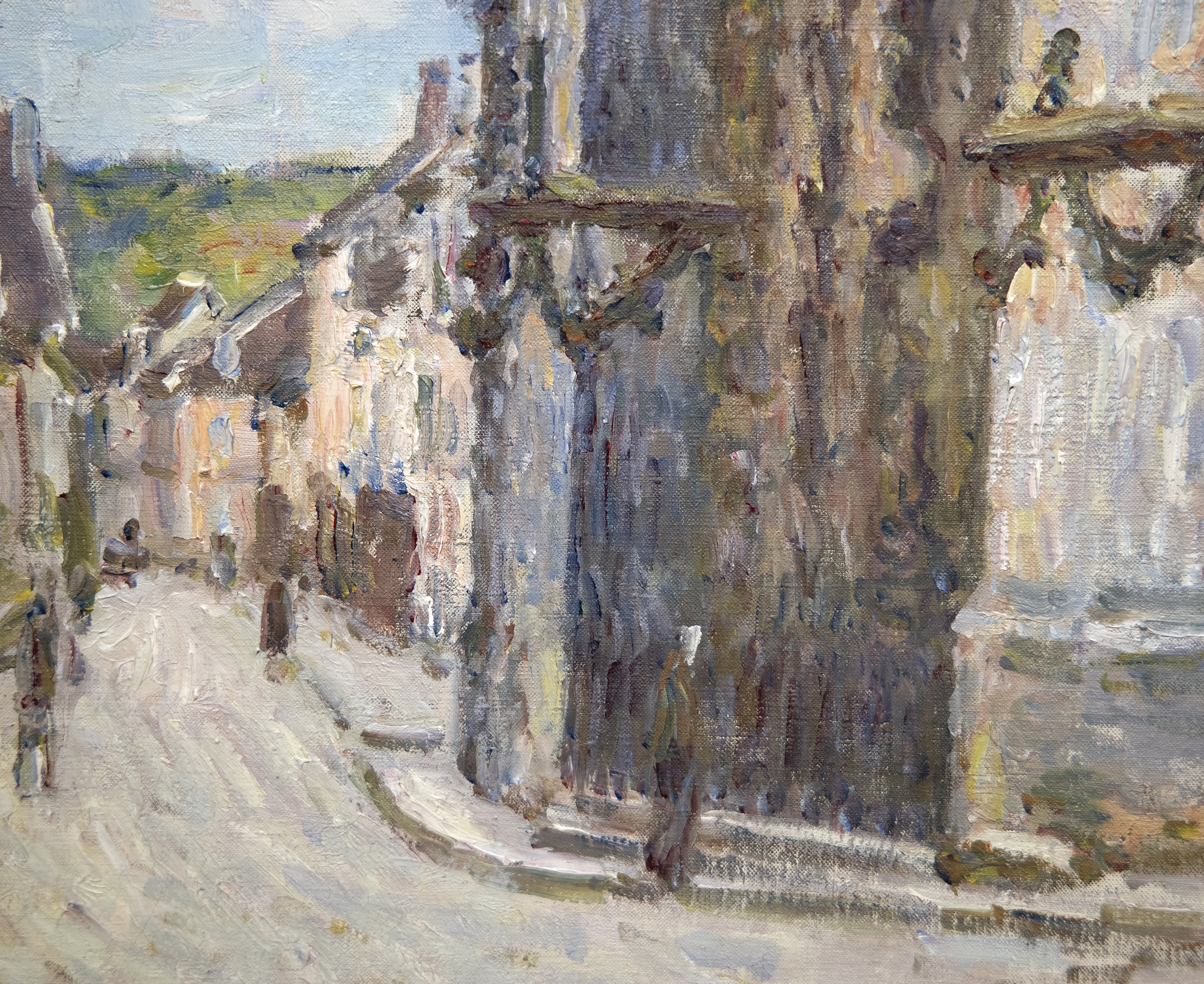
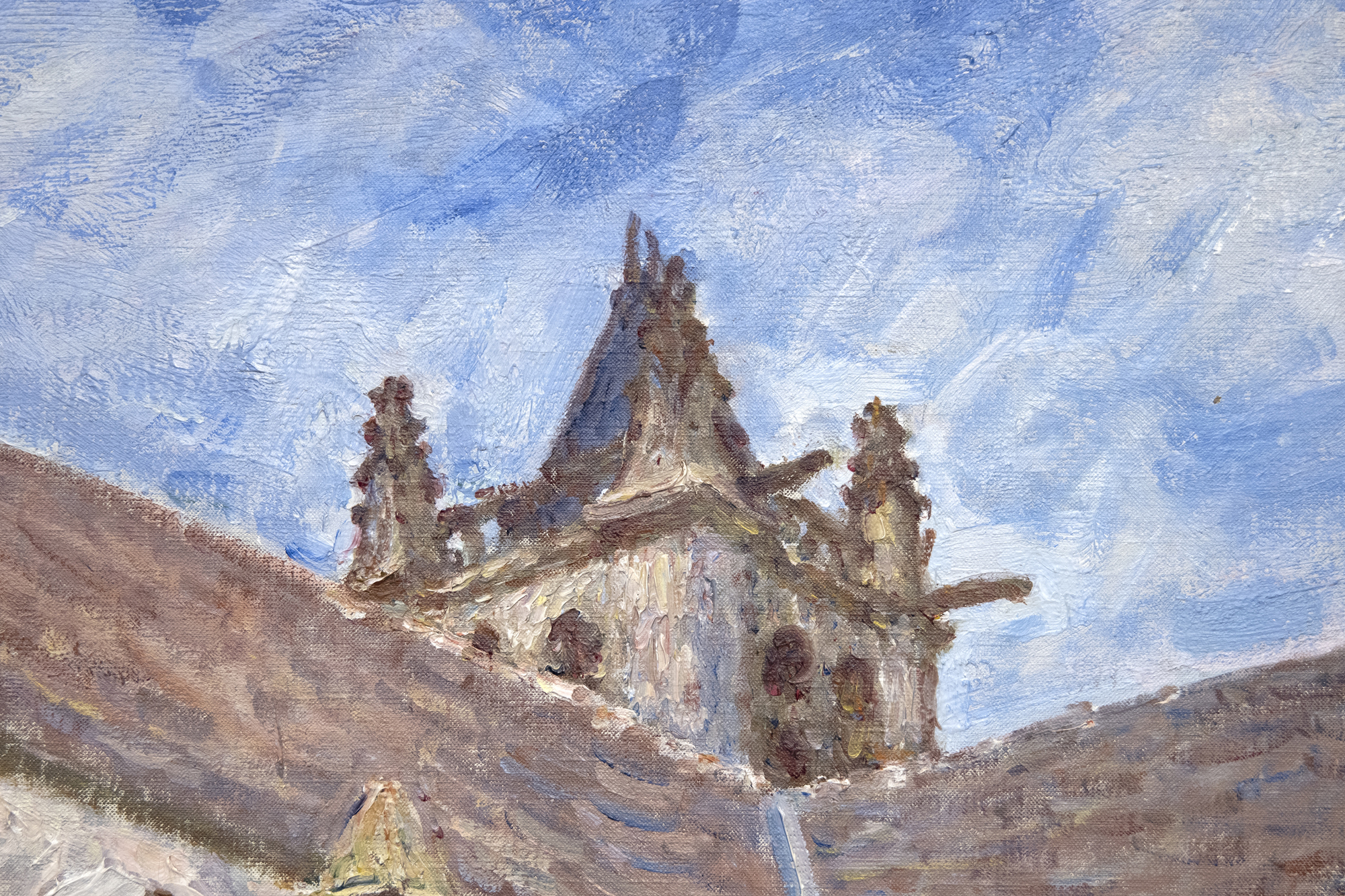
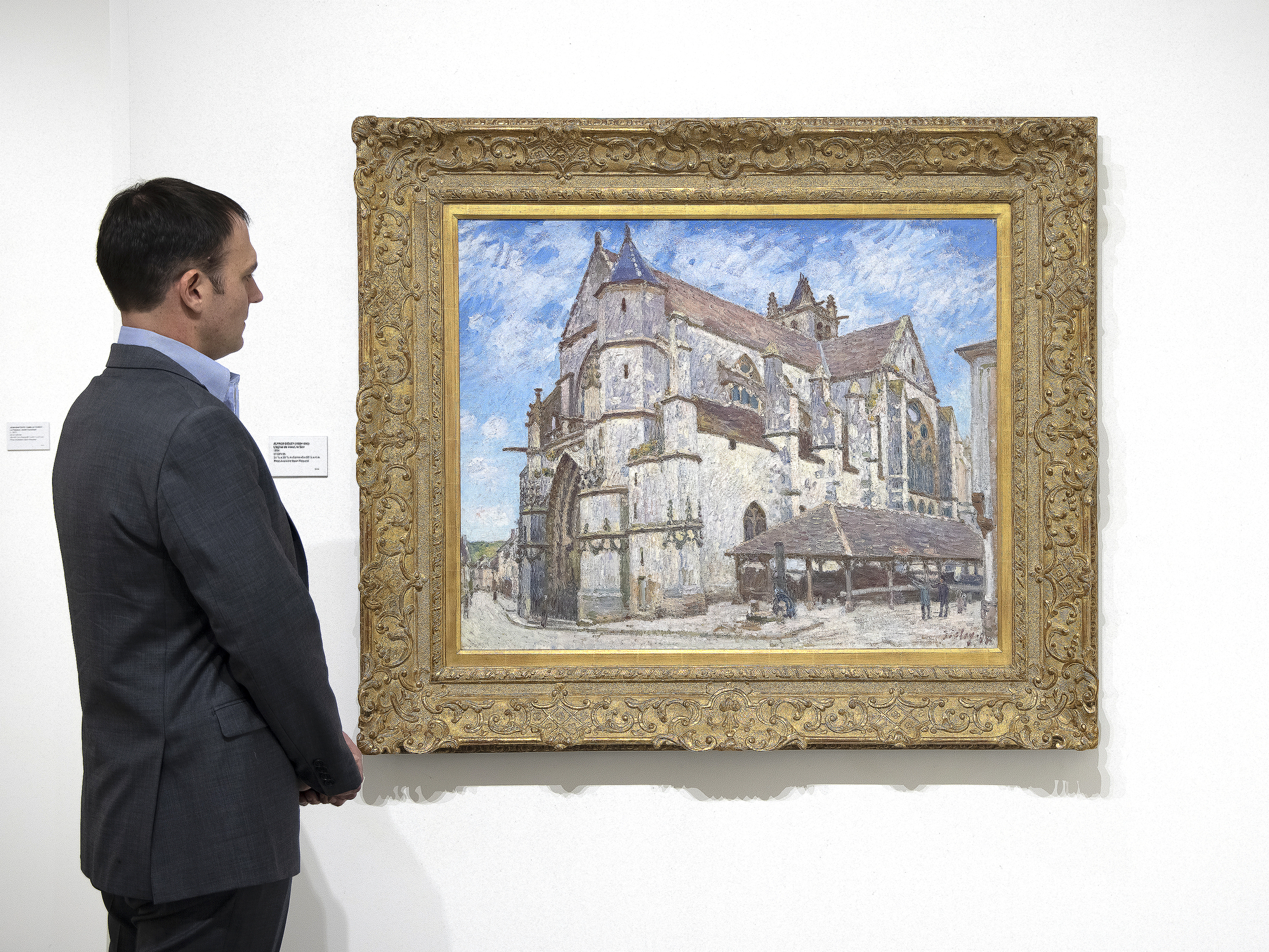
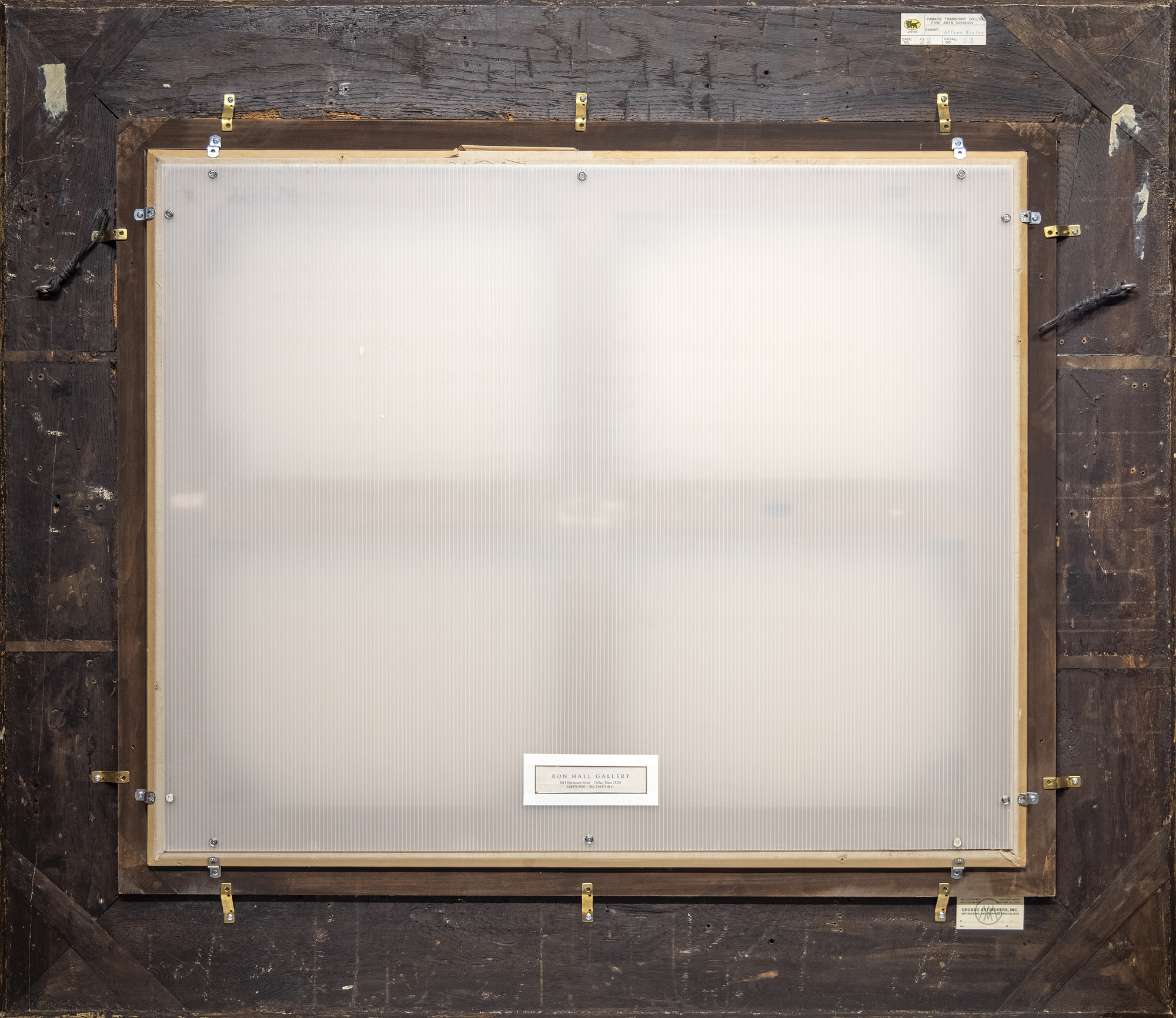
出所
シスレー・エステート売却アトリエ・シズレーのヴァント、ギャラリー・ジョルジュ・プティ・パリ、1899年5月1日、ロット13
ジョージ・ヴィアウ、パリ
販売オテル・ドゥルーオ・パリ、1908年2月20日、ロット37
パリ、ピアソンコレクション(上記セールで入手)
セールヴァンテ・ピアソン、ギャラリー・ポール・カッシーラー ベルリン、1927年10月18日、ロット65
個人コレクション
セールパリ、オテル・ドゥルーオ、1928年6月23日、ロット98
パリ、オーベール・コレクション(上記セールで購入、マルセル・オーベールの可能性あり)
個人コレクション エドワード・ネイム・ギャラリー
S...もっとその。。。teven Bedowitz, Boca Raton, Florida (1989年買収)
プライベートコレクション (ニューヨーク州)
ラリー・ラセルテ(ダラス)(1991年獲得
個人蔵(1996年取得)
展示会
東京、伊勢丹美術館、香川、高松市美術館、広島、和歌山、県立近代美術館、アルフレッド・シスレー展、2000年、No.53、カラー図版pp.138-139文学
O.ロイタースワルド「シスレーの大聖堂、モレの教会の研究」『ガゼット・デ・ボザール』1952年3月号、図1、図版p. 194F.Daulte, Alfred Sisley.Catalogue raisonné de l'œuvre peint, Lausanne, 1959, no.835, illustrated in black and white.
F.Daulte, Sisley.Les Saisons, Paris, 1992, no.41, カラー図版 p.73
R.Shone, Sisley, New York, 1992, pl.134, カラー図版 p.170 (164-165頁に記載)
ブラメ,S.,シスレー,A.,ロレンソー,F.,&ドルト,O.(2021).Alfred Sisley: Catalogue critique des peintures et des pastels(アルフレッド・シスレー:絵画とパステルのカタログ).P. 347 ill.347, 501
...少ない。。。
。それでもシスレーは、一連の雰囲気の変化を通して、モチーフの表情の変化を表現しようと努めた。彼は作品に「陽光の中で」、「霜の下で」、「雨の中で」といったタイトルをつけ、1894年のサロン・デュ・シャン=ド=マルにグループとして出品している。とはいえ、モネの作品とは異なり、《モレの教会、雨の中》では、シスレーがこのモチーフを、その構図の特徴を際立たせるような空間的背景の中に展示することを選んだことがわかる。左側の狭い通りの急降下する遠近法、右側の対置としての建物の線の強い斜めの後退、視線の上の石造りの建物の堂々とした重さなどである。





